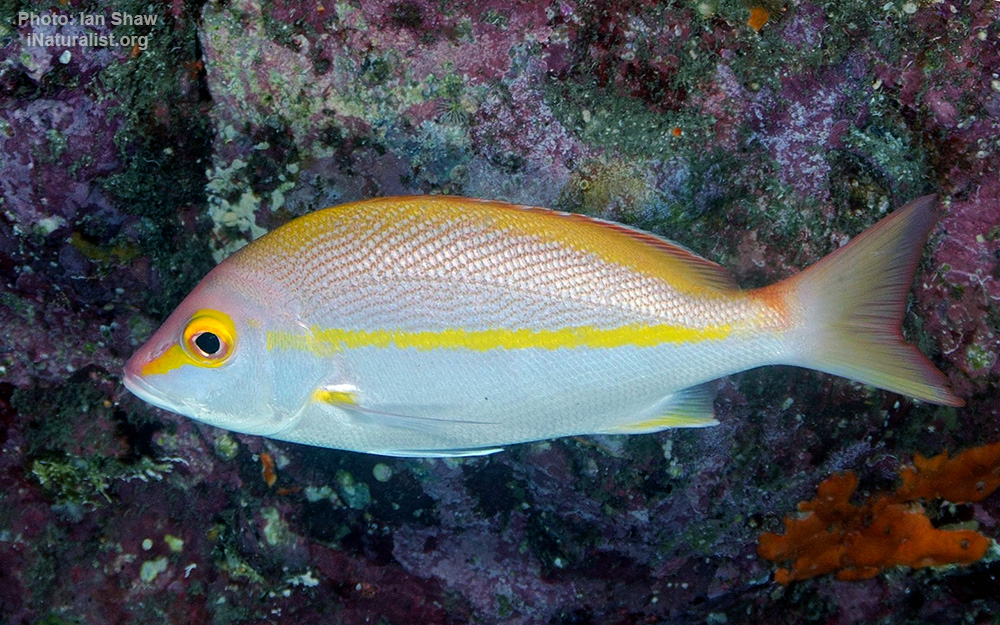Yellow-banded snapper
(Lutjanus adetii)

Classification
General data
Lutjanus adetii has a relatively deep body, which has a standard length of 2.5 to 2.7 times its depth. The snout is rather pointed, the preorbital bone is wider than the diameter of the eye and there is a well developed preopercular protuberance and incision. The tongue has a patch of granular teeth while the vomerine teeth are arranged in a triangular patch.
The dorsal fin has 10 spines and 14 soft rays while the anal fin contains 3 spines and 8 soft rays, these fins have a rounded posterior profile. The pectoral fins contain 17 rays while the caudal fin may be emarginate or slightly forked.
The background colour is rosy-pink shading to silvery below with a dusky to golden stripe which runs from the middle of the operculum to the base of the caudal fin. There is a golden patch which surrounds the eye and runs onto the snout while the pectoral fin base has a yellow blotch,
The dorsal and anal fins have white margins.
The juveniles have a sizeable red spot on the caudal peduncle, which some retain while the mid lateral stripe appears.
This species attains a maximum total length of 50 cm (20 in), although 30 cm (12 in) is more typical.
Lutjanus adetii has a restricted distribution in the southwest Pacific Ocean. It occurs in eastern Australia, eastern Papua New Guinea and New Caledonia.
In Australia it occurs from the northern Great Barrier Reef in Queensland south to Sydney in New South Wales, with small juveniles being recorded further south, and Lord Howe Island in the Tasman Sea.
This species occur from the surface down to 40 m (130 ft) living among rocky and coral reefs.











